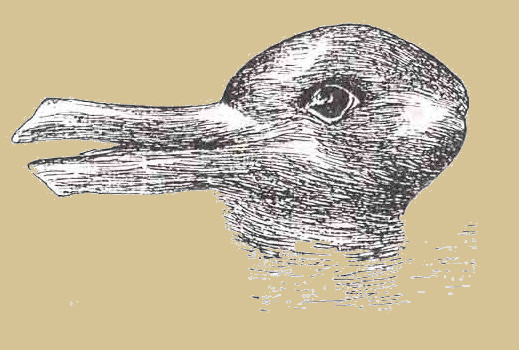The following is my abridgement of chapter 1 of William Pierce’s history of the white race, Who We Are:
Unity & Diversity in Nature, but Never Equality
Miscegenation Stifles Evolutionary Progress
Changing Climate Sped Eurasian Evolution

No people is morally and spiritually healthy unless it is imbued with a strong sense of its own identity. Essential to that sense of identity are an awareness and an understanding of all the qualities which the members of the people share in common.
It is doubly imperative that every man and woman who claims the privilege of membership in a community based on the bonds of common race and common culture knows and takes pride in his racial and cultural history.
When such knowledge and pride are lacking, a community is subject to a host of ills and cannot long endure.
Meaning of “species”
Consider just what the designations “species” and “race” (subspecies) actually mean. Historically both terms—especially race—have had many different meanings. Today a species is usually defined, very roughly, by zoologists as an interbreeding group of animals; and a race, or subspecies, as a morphologically distinct subdivision of a species.
An attempt at a more precise definition of species has been made by Theodosius Dobzhansky. According to Professor Dobzhansky (who is an unabashed propagandist for the cause of racial equality), two groups of sexually reproducing animals constitute two separate species when the groups “are reproductively isolated to the extent that the exchange of genes between them is absent or so slow that the genetic differences are not diminished or swamped.”
What does Dobzhansky’s definition really mean? Certainly, where the exchange of genes between two groups of animals is physically impossible, because no offspring or only infertile offspring can result from a mating, the groups are specifically distinct. Thus, for example, donkeys (Equus asinus) and horses (Equus caballus) belong to separate species, because their mongrel offspring, mules, are always sterile.
But, as already noted, there are a great many instances of pairs of groups which can interbreed with each other but, under natural conditions, either do not or do so relatively seldom, so that their genetic differences are not “swamped.” Such groups are customarily regarded as specifically distinct, in accord with Dobzhansky’s criterion.
One example of such a pair is provided by two very similar species of gazelles, Grant’s gazelle and Thomson’s gazelle. The two intermingle with each other in the wild, and they are interfertile, but they do not mate with each other. Although the morphological difference between the two species is slight—much less than the difference between a Nordic and a Mediterranean, not to mention the difference between a White and a Negro—the gazelles are able to recognize this difference (probably with their sense of smell), and mating is psychologically blocked.
Many other examples—not only among mammals, but also among birds, fish, reptiles, amphibians, and even invertebrates—could be given of pairs of species, potentially interfertile, whose separateness is maintained only by an instinctive, psychological barrier against miscegenation. This general revulsion in Nature against miscegenation has long been recognized by zoologists, and more than a century ago the distinguished French surgeon and naturalist Paul Broca wrote: “Animals that live in complete liberty and only obey their natural instincts seek ordinarily for their amours other animals that are altogether similar to their own kind, and mate almost always with their own species.”
Were this not almost universally the case, the evolutionary process would be vastly less efficient than it is at producing new species. It would depend entirely upon geographical isolation. In fact, however, psychological isolation has played at least as important a role in preventing the recombination of incipiently divergent branches of the Tree of Life.
It should be noted, however, that psychological isolation often breaks down when animals are not in their natural state. In captivity or under domestication many of an animal’s built-in behavior patterns become inoperative or distorted, and this is especially true where mating is concerned. When confined, bulls may mount mares, roosters will sometimes attempt to copulate with ducks, and baboons have been known to lust after women.
The domestic dog, Canis familiaris, provides the classic example of the breakdown of the psychological inhibition against miscegenation, where races as divergent as the St. Bernard and the Chihuahua are not only interfertile but are willing to mate. Dogs have been domesticated and bred by men for at least the last 10,000 years, and constant interbreeding has prevented their separation into distinct species, despite the enormous range of somatic and psychic traits they display—a range approached by no other mammal except man.
Domesticated Man. Man, of course, is the most domesticated of all animals, and it is not surprising that his natural inhibition against miscegenation has become confused—even without the perverse efforts of the egalitarians to promote racial mixing. We should instead wonder at the degree to which this healthiest and most essential of our natural sexual predispositions has survived centuries of a most unnatural lifestyle.
There is a great deal of evidence, historical and otherwise, indicating that in the past the White race, at least, felt a much stronger inhibition against miscegenation than it does today. As urbanization has spread, so has racial mixing. The evidence also indicates a marked variation from race to race in the strength of the inhibition against miscegenation—a variation which, to be sure, may only reflect the effect of different racial lifestyles.
Aryans, Dorians, Goths. The ancient Nordic tribes of Europe universally abhorred racial mixing. The Aryans who conquered India more than 35 centuries ago imposed a strict ban on any sexual contact with the non-White indigenous population, a ban which survives in vestigial form to this day as the Indian caste system. The Dorians who conquered the Peloponnessus at about the same time—and were later known by the name of their chief city, Sparta—likewise forbade miscegenation with the non-Nordic Pelasgian natives. And the Goths who conquered Italy 2,000 years later refrained from mating with the mixed, partly Mediterranean population they encountered there.
In every case the inhibition eventually broke down, as the hardy conquerors settled into a new and softer lifestyle and departed more and more from their ancestral ways. As warriors, hunters, farmers, and craftsmen living in close communion with Nature in their northern fields and forests, their sexual instincts remained sound. But when they became city dwellers and merchants and clerks and administrators, their instincts became blunted, and this fact was reflected in gradually changing sexual mores.
Latin Miscegenation. In other races and subraces the pattern has been different. The Mediterranean peoples of southern Europe have generally shown less disinclination to mate with other races than have Nordics. One can see the effect of this difference most strikingly in the different colonial histories of North America and South America. The early colonists who settled the former were predominantly Nordic, and racial mixing with the indigenous Indians was minimal. But the latter continent was settled by Portuguese and Spaniards, both of whom had a heavy Mediterranean admixture. They interbred widely with the indigenous population, as well as with the Black slaves they imported from Africa.
The same difference can be noticed in the European colonization of Africa. The Portuguese interbred with the Blacks in their colonies of Angola and Mozambique, while the Dutch and English in South Africa and Rhodesia kept their blood largely untainted. Such mongrels as the Nordic settlers did produce were not absorbed into the White population, whereas those produced by the Portuguese were.
It is possible that this Nordic-Mediterranean difference can be partly accounted for in the two different religions the two races of colonizers brought with them to their colonies. The present pattern in America does not support such an accounting, however. Irish, Italian, Polish and other predominantly Catholic ethnic groups are displaying better instincts, on the whole, than the Protestant majority.
It must be remembered, of course, that both Catholicism and Protestantism have undergone significant changes in the last few decades, and that, with the exception of some Italian elements (primarily from southern Italy) and a few other elements from the Mediterranean area, most (White) Catholic ethnic groups in the United States today are very similar racially to the Protestant majority. Certainly, they are far less Mediterranean in their makeup than the Spanish and Portuguese colonizers of South America and Africa were.
Anything that Moves. In the case of the Negroes, their notorious lack of sexual discrimination clearly cannot be blamed on their religion. It is true that a civilized environment is even more unnatural for them than it is for Whites, but even in controlled situations, such as prisons, there remains a strong racial difference in behavior between Blacks and Whites. As anyone unfortunate enough to have spent any time in close confinement with them can testify, Blacks will attempt to copulate with anything that moves.
We can now see that the lumping together of Negroes, Whites, Mongolians, Australian aborigines, and others in a single species, H. sapiens, can be justified only because, under the unnatural conditions in which they live, they often interbreed with one another. Under natural conditions, where psychological barriers against miscegenation become more fully operative and the various races no longer form a single, interbreeding group, they must be classified as separate species.
Furthermore, if any one race achieves a sense of identity sufficient to make feasible the full reactivation of its natural loathing of racial mixing, whether by means of education or some other form of psychological conditioning capable of overcoming the instinct-blunting effects of an unnatural lifestyle, it thereby achieves for itself the status of a separate species.
Thus, the basis on which the concept of a single human species rests is quite tenuous. It is not a physical basis—the morphological differences among the races are more than sufficient to qualify them as separate species—but a psychological basis, and a basis in abnormal psychology, at that.
It is important to understand this, because with understanding comes freedom from the superstition of “human brotherhood.” We are one with the Cosmos and are, in a sense, brothers to every living thing: to the ameba, to the wolf, to the chimpanzee, and to the Negro. But this sense of brotherhood does not paralyze our will when we are faced with the necessity of taking certain actions—whether game control or pest control or disease control—relative to other species in order to insure the continued progress of our own. And so it must be with the Negro.
The enlightened attitude for which we should strive is one which places more emphasis than has been customary in the past on the unity of life, and which consequently values non-human life—whether redwood trees or whales—more than it does a minor human convenience or a temporary economic advantage, but which at the same time maintains a proper perspective toward all forms of life, whether closely related to us or not. No neo-humanistic superstition must allow any species—or sub-species, if one accepts the all-inclusive definition of H. sapiens now in vogue—to stand between us and our race’s evolutionary destiny.
 (1) sees all history and the world of ideas through the prism of white racial preservation. He must know by heart the historical facts collected by William Pierce in his last book, Who We Are and Arthur Kemp (photo) in March of the Titans: The Complete History of the White Race;
(1) sees all history and the world of ideas through the prism of white racial preservation. He must know by heart the historical facts collected by William Pierce in his last book, Who We Are and Arthur Kemp (photo) in March of the Titans: The Complete History of the White Race;



